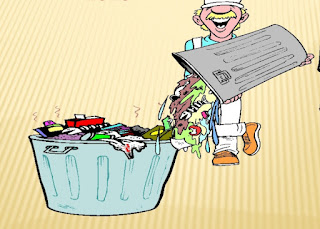Standard Operating Procedures (SOPs)
Standard Operating Procedures (SOPs)
Introduction
- Definition:
SOPs are written, standardized instructions that describe how to
perform routine activities and operations in a consistent and safe manner.
- Purpose:
- Ensure
quality and consistency in care.
- Maintain
legal and accreditation compliance (e.g., NABH, JCI).
- Provide
clarity on roles/responsibilities.
- Minimize
errors and promote patient safety.
- Key
Components:
- Title
& Objective
- Scope
& Applicability
- Responsibilities
- Procedure
Steps
- Documentation
& Records
- References
& Review Dates
- Importance:
- Promotes
standardization
- Reduces
variability in service delivery
- Enhances
training and orientation
- Assists
in audits and quality assurance
SOPs by Department/Function
A. Outpatient Department (OPD)
- Patient
registration and demographic entry
- OPD
card generation
- Queue
system and appointment handling
- Consultation
flow and follow-up
- Referral
to diagnostics or inpatient
- Documentation
and billing
- Emergency
identification and action
B. Inpatient Department (IPD)
- Admission
process (planned/emergency)
- Bed
allotment and patient shift-in
- Patient
orientation and consent forms
- Daily
care documentation
- Drug
administration & vitals charting
- Handover
process (nurses/doctors)
- Discharge
planning and summary creation
C. Surgery / Operating Theater (OT)
- Pre-operative
assessment and checklist
- Informed
surgical consent
- Sterilization
protocol and hand hygiene
- Instrument
count and sponge tracking
- Anesthesia
safety checklists
- Post-operative
transfer and recovery monitoring
- OT
cleaning and turnover procedure
D. Nursing Services
- Shift
handover/takeover
- Drug
chart review and administration (5Rs)
- Nursing
care plans (based on condition)
- Monitoring
vitals and escalation
- Pressure
sore prevention protocol
- Fall
risk assessment and prevention
- Documentation
in nursing records
E. Laboratory Services
- Sample
collection SOP (blood, urine, etc.)
- Labeling
and transport protocol
- Calibration
and maintenance of equipment
- Test
processing (e.g., CBC, LFT, etc.)
- Quality
control and documentation
- Reporting
and critical value notification
- Biomedical
waste disposal SOP
F. Radiology
- Patient
verification and consent
- Radiation
safety protocol (lead aprons, dosimeters)
- Imaging
SOPs (X-ray, CT, MRI, USG)
- Contrast
administration protocols
- Film/report
processing and dispatch
- Equipment
maintenance logs
- Emergency
during scan SOP (e.g., allergic reaction)
G. Rehabilitation (Physiotherapy/OT)
- Referral
process and assessment SOP
- Goal-setting
and therapy planning
- Patient
education and documentation
- Infection
control and hygiene
- Use
and care of equipment
- Discharge
advice and follow-up planning
H. Pharmacy
- Drug
procurement and verification SOP
- Storage
guidelines (cold chain, labeling)
- Prescription
validation and dispensing
- Narcotic
drug handling SOP
- Expiry
monitoring and disposal
- Patient
counseling (as needed)
- Stock
audits and inventory control
I. Dietary Services
- Dietician
referral and assessment
- Diet
chart preparation (based on disease)
- Food
preparation hygiene SOPs
- Meal
distribution SOP (timing, quantity)
- Special
diet handling
- Feedback
collection and action
- Kitchen
cleaning & food safety protocol
J. CSSD (Central Sterile Supply
Department)
- Collection
of used instruments
- Cleaning
and disinfection SOP
- Sterilization
process (Autoclave/ETO)
- Packing
and labeling
- Dispatch
to respective departments
- Monitoring
sterility indicators
- Documentation
and traceability logs
K. Material Management
- Purchase
requisition and approvals
- Vendor
selection and tender process
- Receiving
goods and inspection SOP
- Inventory
management and reordering
- Storage
guidelines (FIFO/FEFO)
- Distribution
to user departments
- Return/damage
handling
L. Laundry Services
- Collection
of soiled linen (from wards/OT)
- Segregation
(infected/non-infected)
- Washing,
drying, ironing SOPs
- Disinfection
protocols
- Packing
and dispatch to wards
- PPE
use for laundry staff
- Wastewater
disposal and linen records
M. Engineering/Maintenance
- Daily
inspection rounds
- Preventive
maintenance schedule (ACs, lifts, generators)
- Complaint
registration and resolution
- Biomedical
equipment calibration
- Water
supply and HVAC checks
- Fire
safety equipment testing
- Power
backup SOP
N. Disaster Management
- Code
protocols (Red, Blue, Pink, etc.)
- Evacuation
SOP and mock drills
- Fire
safety and firefighting SOP
- Communication
protocol during disaster
- Emergency
triage and transport
- Backup
utilities and coordination plan
- Recovery
and debriefing
O. Housekeeping
- Cleaning
schedules (daily, weekly, terminal)
- Disinfection
of patient care areas
- Spill
management (blood/body fluids)
- Toilet
cleaning SOP
- Waste
segregation and disposal (BMW)
- Linen
management
- Monitoring
via checklist & supervisor rounds
Video Description
· Don’t
forget to do these things if you get benefitted from this article
· Visit
our Let’s contribute page https://keedainformation.blogspot.com/p/lets-contribute.html
· Follow
our page
· Like
& comment on our post
·




Comments